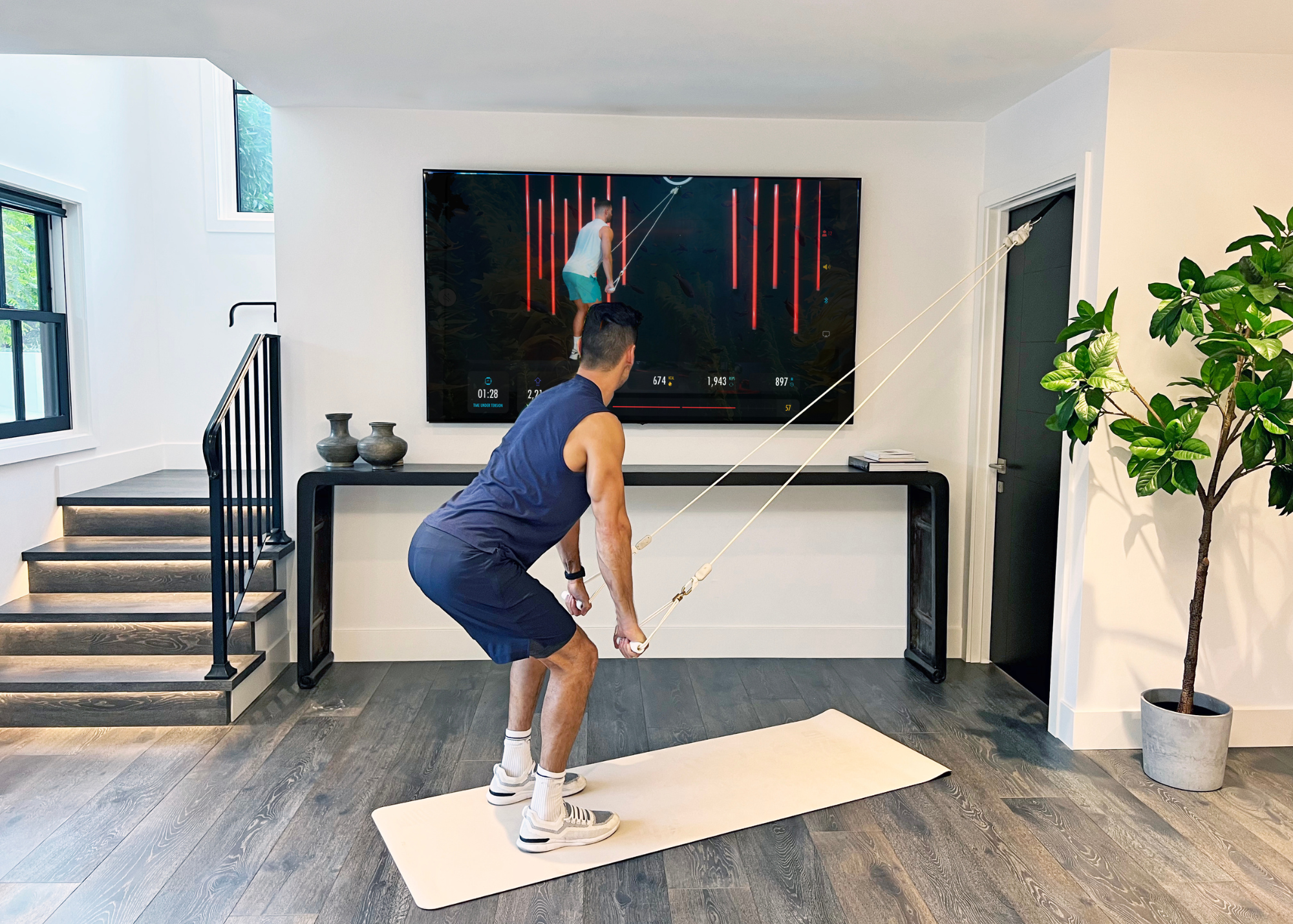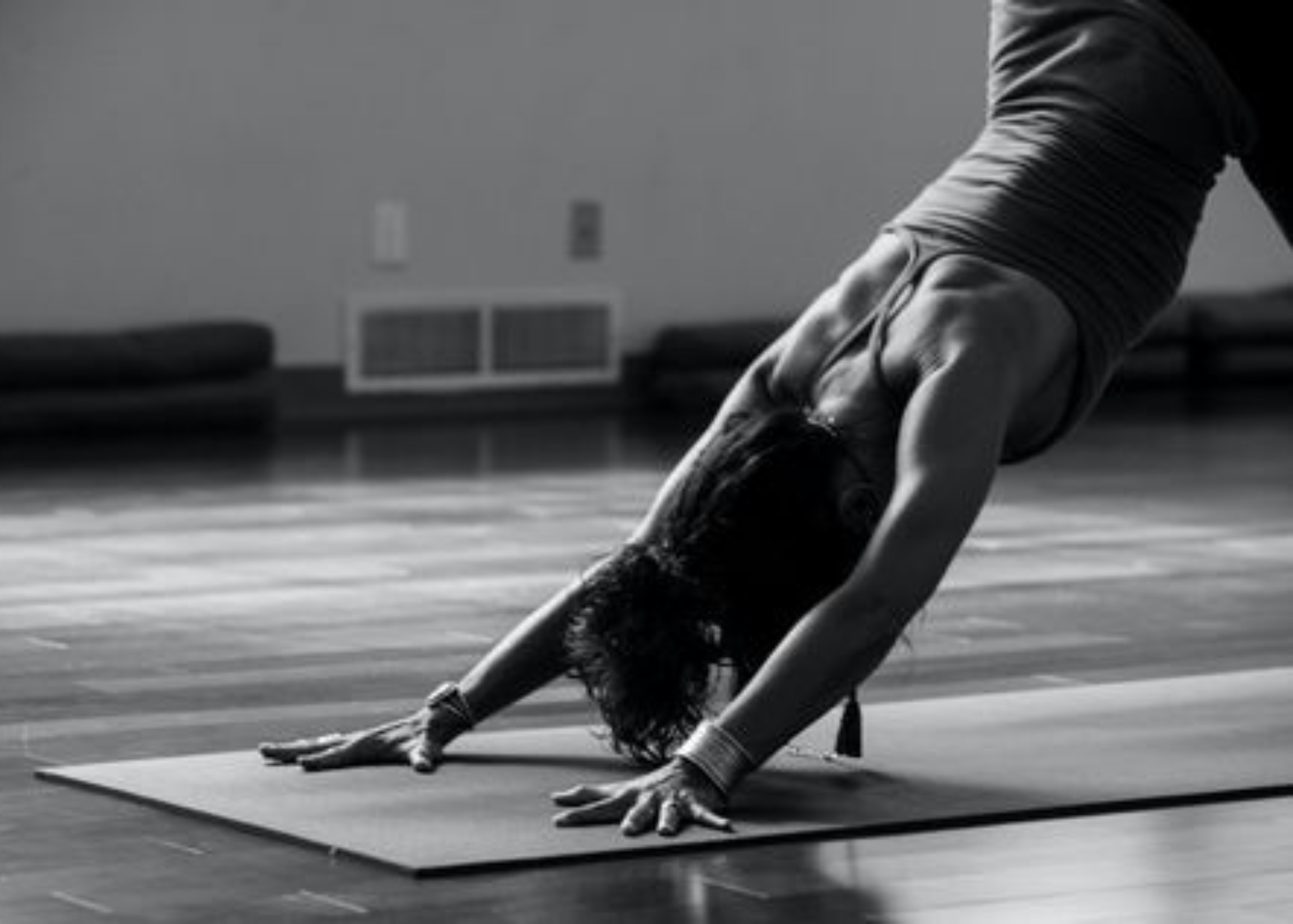Fortunately, shoulder stability exercises can fix misalignment and improve body posture. Also known as scapular stabilization exercises, you can manage shoulder pain, improve functional mobility, and improve posture with these exercises.
Read on to learn about the causes and how to fix shoulder muscle imbalance.
What causes uneven shoulders?
1. Favouring one shoulder side
There can be several factors that can result from several reasons. It can be because of reasons as simple as using one hand for writing or carrying a heavy bag or as severe as muscular-skeletal imbalances such as scoliosis. The cause of it is your sedentary lifestyle.
2. Nerve Damage
In some cases, an underlying muscle imbalance somewhere else in the body can also have a domino effect. For instance, a hip injury can bring your body out of alignment as you adjust to move your body.
3. Sedentary Lifestyle
The most common causes of shoulder imbalance are poor posture, uneven hips, a sedentary lifestyle, flat feet, osteoporosis, weak thigh muscles, and overuse of one shoulder.
However, unless your misalignment results from a physical skeletal or muscular deformity, shoulder muscle imbalance exercises can effectively fix the problem.
Let's start with shoulder warmup exercises you must do before shoulder stability exercises.
Shoulder warmup exercises
1. Straight arm circles warmup

- Stand with your feet shoulder-width apart, keeping your back straight.
- Stretch your arms out straight to the sides.
- Start moving your arms in small circles, pretending you're drawing small circles in the air.
- Keep taking deep breaths to relax your body.
- Change directions every 10 circles.
- Do warmup for 20-30 seconds in each direction.
2. Alternating chest hugs

- Stand up straight with your feet comfortably apart.
- Stretch your arms out to the sides as you are about to give a big hug.
- Now cross one arm over the body, reaching for the opposite shoulder.
- Give yourself a gentle hug by wrapping your arm around your upper body.
- You must feel the stretch in your shoulder and chest in this position.
- Hold it for a moment before switching arms.
- Keep alternating between hugging each side for 10-12 reps.
- After proper warmup, you are ready to do these shoulder stability exercises. A shoulder imbalance workout can be done with and without equipment. Here we list both types for you.
Exercises to treat uneven shoulders
Uneven shoulder workout without Equipment
1. Plank

- Take a push-up position, supporting your body with your forearms and toes.
- Maintain a straight posture forming a straight line with your body from head to heels.
- Draw your stomach in towards the spine to engage your core muscles.
- Hold the position for 20-30 seconds.
- Maintain alignment and keep breathing.
2. Pelvic Tilt

- Lie flat on the mat with your knees bent and feet flat on the mat, keeping them hip-width apart.
- Keep arms to the side, palms facing down.
- Take a deep breath, and as you exhale, press your lower back gently into the floor, tilting your pelvis upward.
- Hold the position as you reach the top, and keep your core muscles engaged.
- Inhale as you release the tilt and return to the starting position.
- Repeat the pelvic tilt for 15 repetitions.
3. Cat-Cow
- Get into a tabletop position with your hands beneath your shoulders and knees bent. Keep your wrists aligned with your shoulders and knees under your hips.
- As you inhale, arch your back, lift your tailbone, and drop your belly towards the floor. Lift your head to look up. This is a cat position.
- As you exhale, round your back and tuck your chin towards your chest, drawing your stomach towards your spine. This is a cow position.
- Repeat the cat-cow movement for 12-18 reps.
4. Ear-to-shoulder stretch

- Sit or stand to keep your spine straight, whatever position you are more comfortable in.
- Tilt your head to the left, bringing your left ear towards your shoulder.
- Feel the stretch along the opposite side of your neck.
- Hold the stretch for 15-20 seconds, and breathe slowly and deeply.
- Return the head to the center in a controlled motion and tilt it to the right side.
- Keep the reps to a minimum to not stress your neck.
5. Shoulder raise

- Stand straight with your arms to your sides and your spine relaxed.
- Squeeze your shoulder blade and lift your shoulders towards your ears.
- Hold the position for a few seconds before relaxing your shoulders back down.
- Continue shoulder raise for 30 seconds.
6. Reverse prayer pose

- Stand straight and bring your hands together behind your back with your fingers pointing down.
- Bring your shoulders back and widen your chest.
- Now flip your hands, making your fingers pointing up.
- Press your palms together and draw your elbows back.
- Maintain the pose for 30 seconds.
- This shoulder imbalance correction exercise should be done a few times throughout the day.
Uneven shoulder workout with Equipment
Next, we detail how to fix shoulder muscle imbalance with exercises using the equipment.
1. Front Shoulder Raise

- Stand straight with dumbbells in each hand, arms pressed to the sides, and palms facing your body.
- Engage core muscles by slightly bending your elbows.
- Slowly lift your arms forward in a controlled motion till shoulder height.
- Hold the position momentarily before lowering your arms back to starting position.
- Do 8-12 repetitions.
2. Lateral Raise

- Hold dumbbells in each hand; arms pressed to the sides, and spine straight.
- Activate the core by slightly bending the elbows.
- Raise both arms sideways to bring them to shoulder level until they are parallel to the floor.
- Hold for a few seconds before lowering the weights to your sides.
- Do 15 reps.
3. Rear Deltoid Lift

- Sit on a bench with your feet firmly resting on the floor and your chest slightly forward, and hold dumbells in each hand.
- Bend your knees slightly and hinge forward at your hips, keeping your back straight.
- Keep your arms hanging in front of you with palms facing each other.
- Now squeeze your shoulder blade together as you lift both arms to the sides.
- Hold the position for a moment at the top, then lower the weights back down.
- Repeat 10-15 times.
4. Resistance Band Shoulder Squeezes

- Attach a resistance band to a secured anchor point at your chest height.
- Hold the ends of the resistance band in each hand with arms extended straight out.
- Squeeze your shoulder blades together as you pull the band towards your chest.
- Then turn your palm towards the floor and pull the resistance band towards your hips, fully extending your arms.
- Do 12 reps.
5. Resistance band arm-stretch sequence

- Grab onto the resistance band, standing with your feet hip-width apart and both arms extended in front of your body.
- Bring your arms together before slowly releasing them.
- Now raise your arms overhead with arms touching your ears.
- Now stretch the band as wide as possible, making a "T" with your arms.
- Slowly return to the starting position.
- Lower the band behind your neck and hold the position for a few seconds before lifting it back up.
- Repeat 10 times.
These resistance band exercises benefit your overall shoulder health. You can do these exercises for shoulder imbalance correction using the LIT Axis smart resistance band.

This resistance band has built-in technology to monitor any muscle imbalance during exercise. It corrects the muscle imbalances on the left and right side of the body.
~[[lit-axis-cherry]]
6. Reverse fly

- Stand with your waist and bend slightly forward.
- Hold dumbbells in each hand, arms hanging.
- Slowly lift your arms out and up as your squeeze your shoulder blades.
- Hold the position for a moment keeping your arms parallel to the floor.
- Gradually return to the starting position.
- Do 15 repetitions.
Shoulder instability exercises to avoid
You must carefully choose muscle balance exercises or seek guidance from fitness trainers or physiotherapists. When dealing with shoulder instability, you must avoid activities that can potentially exacerbate the condition.
-
Uptight rows
The exercise involves lifting weight close to your body with an underhand grip. This movement squeezes the space within the shoulder joint, which can lead to discomfort.
-
Behind-the-neck shoulder press
Another exercise requiring lifting weights behind your head puts excessive stress on the shoulders, potentially worsening instability.
-
Dips
This exercise uses body weight to build muscles but can strain the shoulder joint and is unsuitable for individuals with shoulder imbalance.
Conclusion
Shoulder imbalance is not always evident unless it becomes painful or affects body posture. That's why you must have an active lifestyle and exercise regularly. Shoulder stability exercises can fix the misalignment if you suffer from the condition. However, you should be patient; your shoulders will take a while to align correctly. Always see a doctor if your condition is severe to discuss how to fix shoulder muscle imbalance.
FAQs
1. How to prevent shoulder injuries while exercising?
Always start with a proper warmup to increase blood flow to the shoulder muscles before the workout. Focus on gradual progression and learn good form before increasing the intensity of the workout. Strengthening the muscles surrounding the shoulder joint, including the rotator cuff, will provide more stability and improve shoulder mobility and flexibility.
Proper rest and recovery are also essential between workouts to ensure your muscles are relaxed and repaired to avoid any discomfort or pain during exercises.
2. I am returning from a shoulder injury. How should I approach training?
First, you must seek medical clearance from your doctor before resuming a shoulder imbalance workout. Strictly follow the prescribed rehabilitation exercises to restore strength and mobility. Begin with a resistance and lower-intensity workout to gradually reintroduce your shoulder to exercise. You must avoid aggravating exercises that caused your injury initially.
Also, work out under the supervision of a physical therapist or fitness professional for safe and effective training.
3. Is shoulder imbalance abnormal?
Yes, shoulder imbalance is a relatively common condition affecting millions of people. You can manage the condition with regular shoulder muscle imbalance exercises unless you have severe imbalances or shoulder imbalance that leads to pain or dysfunction.





